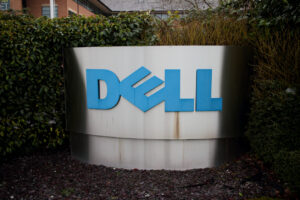Twitter announces leadership changes, Uber CEO urges employees to ‘treat hiring as a privilege’, and more
Get helpful tips on crafting customized messages to employee groups, along with our weekly roundup of inspiring stories.

Hi there, comms connoisseurs.
Let’s explore some notable stories from May 9-13, 2022 — and pull out a few timely, tactical takeaways along the way:
1. Twitter CEO announces high-profile leadership changes
Twitter CEO Parag Agrawal sent a memo to staff on Thursday announcing that Kayvon Beykpour, Twitter’s general manager, will leave the company along with Twitter general manager for revenue Bruce Falk. Beykpour will be replaced by the company’s interim general manager of consumer product, Jay Sullivan.
Agrawal said that the departures, which follow the purchase of the company by Elon Musk, will be followed by a pause of most new hiring and reined in spending . He assured employees that the company is not currently planning layoffs.
“It’s critical to have the right leaders at the right time,” Parag Agrawal, chief executive of Twitter, said in the memo to staff. Mr. Sullivan’s “product vision, ability to inspire, move quickly and drive change is what Twitter needs now, and in the future.”
Agrawal’s memo goes further than his past communications in setting expectations for the future, while also explaining that these incoming decisions stem from Twitter’s failure to hit audience and revenue goals.
In doing so, Agrawal demonstrates his leadership beyond the shadow of Musk’s celebrity and sets a precedent for timely employee engagement that should help him maintain an authoritative position amid subsequent internal shakeups.
2. What Uber’s employee memo says about corporate comms
Uber CEO Dara Khosrowshahi sent a memo to staff that outlined his perspective on the future of the company, including a more aggressive expansion into food and freight delivery. The email also said that Uber will cut costs by “treat(ing) hiring as a privilege.”
“[We will] be deliberate about when and where we add headcount. We will be even more hardcore about costs across the board,” Khosrowshahi further wrote.
“It’s clear that the market is experiencing a seismic shift and we need to react accordingly,” Khosrowshahi wrote to staff. The email also noted that the company will scale back spending on advertising and incentives, as part of a push to become profitable in terms of “free cash flow,” rather than only adjusted earnings before interest. “We have to show the value of the platform in real dollar terms. We are serving multi-trillion dollar markets, but market size is irrelevant if it doesn’t translate into profit,” said the CEO.
“I’ve never been more certain that we will win. But it’s going to demand the best of our DNA: hustle, grit, and category-defining innovation. In some places we’ll have to pull back to sprint ahead. We will absolutely have to do more with less,” wrote the Uber CEO in Sunday’s email. “This will not be easy, but it will be epic.”
Khosrowshahi’s message teases an emerging trend during a time when other businesses, like Netflix, are downsizing as a means to offset declining revenues. In Uber’s case, the company more than doubled its revenue between now and the same time last year to $6.9 billion, and nearly lost as much at $5.9 billion.
Overall, the email comes across as a patchwork with multiple messages intended for multiple audiences all mixed together, from hiring managers to marketing team to executives. And none of these announcements are tied to timeline or concrete expectations. In all, this communication would have been better served divided and distributed to customized employee segments.
Because they are all lumped together, his words set an ominous tone at a time when employees crave clarity, certainty and concrete information. All told, blasting “we will absolutely have to do more with less” to your entire workforce in the midst of a labor shortage might not be the best way to motivate your workforce around a business-wide strategy.
3. Email still rules but may be overused, according to Ragan survey
In Ragan’s 2022 Communications Benchmark Report respondents unequivocally reinforced their love of email communications. Seventy-eight percent cited it as the top channel for internal comms, while 60% said it was an effective way to connect employees to senior leadership and 74% turn to it for manager communications. Few other tools even came close.

While email is undoubtedly a strong tool for communicating within an organization, the data raises a question: Are we leaning too much on email?
One respondent said that “over reliance on broadcast email” is an obstacle to better communications, a feeling anyone with a bursting email inbox can relate to. Email is also decidedly not a strong tool for communicating with deskless workers.
But email can feel like the path of least resistance. It can be faster to bang out an email than to organize a town hall or produce a video. And despite the growth of messaging programs like Teams or Slack, not all workers are comfortable with the tools yet.
Use your email measurement tools to make sure email really is effective, not just easy. Segment your communications so only the people who need to get that particular message are receiving it.
Download your copy of the exclusive Benchmark Survey Executive Summary today and see how your communication efforts measure up. To obtain a full copy of Ragan’s 2021 Communications Benchmark Report become a member of the Communications Leadership Council. Click here for more details.
4. McDonald’s employees react to new franchise grading system
McDonald’s announced that it will roll out a new system early next year to assess the performance in its franchise restaurants. The company says that the new system will better help McDonald’s support its growth plan objectives.
Franchisees aren’t so sure, with many questioning the timing of this rollout amid a tight labor market when operations are already taking a hit. In two separate company surveys, franchisees expressed their concerns that the program’s six to 10 visits a year from company and third-party assessors, on top of other local regulatory inspections, will result in a less collaborative approach to operations. They also expressed concerns about already waning employee morale, with one employee telling CNBC that “you cannot improve things by telling my managers that they failed.”
“We must remain laser focused on maintaining our world-famous standards of excellence in our restaurants. This comprehensive performance management system, designed with ongoing input from franchisees, will offer tailored support and coaching to restaurants to help them provide a seamless McDonald’s experience that will keep customers coming back,” the company said in response to a request for comment. “To give time for restaurants to learn the new system, optional learning visits are being offered in 2022 ahead of the official start in January 2023.”
The company added that the assessment framework includes personalized resources that will help franchisees improve everyday performance and drive sales, profitability and guest counts.
After a couple of controversies around how McDonald’s franchisees were enforcing COVID-19 safety regulations (including one where employees were allegedly forced to wear dog diapers as face masks), it’s understandable that the company would institute a framework for assessing the performance and behavior of these partners.
What’s less understandable is the order of operations that McDonald’s followed to announce PACE. Though it’s unclear when in the process the two surveys were deployed, the company did not explain how it incorporated feedback from those into its announcement and structure of the upcoming initiative. The fact that sources spoke to CNBC on the condition of anonymity further suggests a leak that could have been plugged with good old-fashioned partner engagement.
McDonald’s says that it will offer personalized resources to franchisees as part of its framework, but the details of those resources remain unclear and should have been communicated at the top of the announcement. Similarly, what does tailored support and coaching entail? The promise of individualized attention seems disingenuous when delivered in a reactionary message that could have accompanied the initial announcement.
Moreover, this program announcement demonstrates the importance of nurturing a feedback loop from the managers who interact with your employees every day to the corporate communicators who make decisions that affect them.
5. How about some good news?
This week, let’s draw inspiration from:
- A new study that overcame a major hurdle for reversing deafness
- A Bronx housing complex that will feature an on-site tool to turn household waste into fertilizer
- Scientists discovering the genetic cause of lupus, which will lead to new treatments for the autoimmune disease
- Ragan Training, which is an incredible resource for communication inspiration and education. You also deserve an award. Get your due here!
Take good care of yourselves, comms champions, and keep up the good work.







